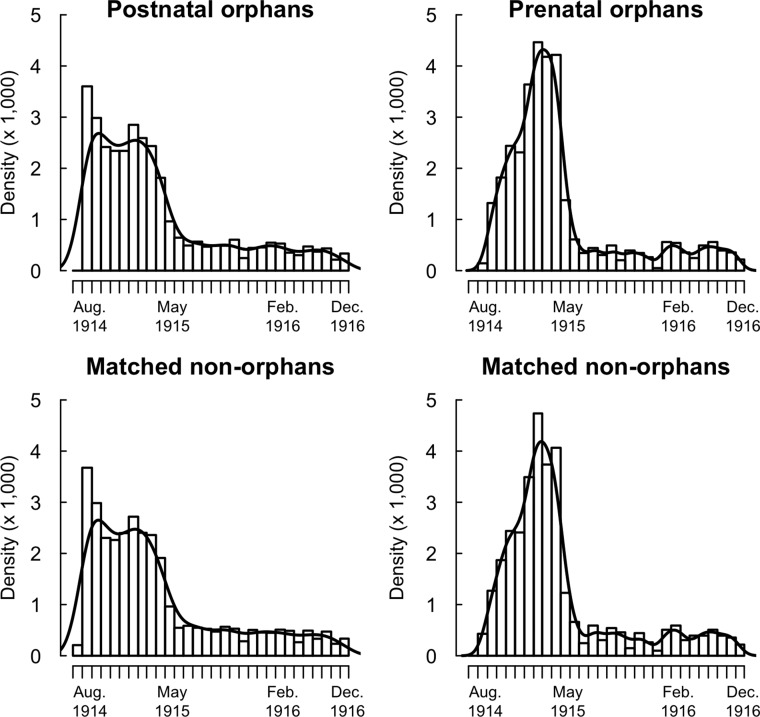Fig. S2.
Birth dates of prenatal and postnatal orphans and MNOs. The majority of orphans were conceived before August 1914 (the beginning of the war) and thus were born before May 1915. The observed abrupt decline in the monthly number of orphan births in May 1915 paralleled the decline observed at the country level (66). The distributions of dates of birth were different in prenatal and postnatal orphans. By design, the distribution of dates of birth is identical in orphans and MNOs for both types of orphans. The number of prenatal orphans born in a given month was determined by both the number of conceptions 9 mo before and the father’s risk of death during pregnancy. Men who impregnated women just before the war began had a prewar fertility and were at risk during the woman’s entire pregnancy. The observed peak in the birth of prenatal orphans in February–April 1915 therefore was expected. In contrast with prenatal orphans, the monthly number of postnatal orphans was approximately constant before May 1915. MNOs are matched to orphans by district and date of birth, so any cofounding associated with the place and date of birth (e.g., changing disease environment) is removed in the comparison of orphans and MNOs. The solid line shows the Gaussian kernel density estimate.

